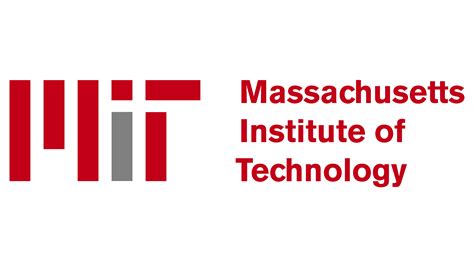
Quantum News Briefs, November 13th, 2023:
D-Wave Reports Third Quarter Results for 2023

D-Wave Quantum Inc. has announced strong growth in its third-quarter financial results for 2023, with a 51% increase in revenue and a 53% rise in bookings year-over-year. This marks the company’s sixth consecutive quarter of growth in bookings, totaling $8.4 million for the year, a 125% increase from 2022. The company has expanded its commercial reach, signing new agreements with major clients across various industries and advancing in developing quantum computing solutions. Key technical achievements include progress in high-coherence qubits and quantum error mitigation. Dr. Alan Baratz, CEO of D-Wave, highlighted the shift in quantum computing from research to practical enterprise applications, emphasizing the increasing commercial use of their annealing quantum computing solutions.
Rice University hosts International Workshop on Quantum Vacuum in Matter

Rice University recently hosted the inaugural International Workshop on Quantum Vacuum in Matter, a three-day event at the Ralph S. O’Connor Building for Engineering and Science. The workshop gathered global experts to explore recent progress and future research directions in quantum vacuum, a field studying the transient fields within vacuums based on quantum fluctuations. Discussions focused on leveraging quantum vacuum insights to develop new materials with potential applications in information processing and sensing technologies. Advances in light-matter coupling and cavity quantum electrodynamics have enhanced scientists’ abilities to manipulate quantum vacuum properties. The workshop highlighted the challenges of researching these phenomena in larger atomic groups and the goal of transforming Rice into a leading research hub in this domain. The event, supported by various foundations and Rice University, also aimed to attract students to this cutting-edge field of quantum research.
For the First Time, MIT Physicists Trap Electrons in a 3D Crystal: Opening Opportunities for the Future of Superconductivity

Scientists at MIT have successfully confined electrons in a three-dimensional material, achieving an electronic “flat band” state for the first time. This state, resembling a collective, zombie-like behavior, allows electrons to experience quantum effects and potentially exhibit exotic properties like superconductivity and unique magnetism. The trapping is possible due to the crystal’s atomic structure, which resembles “kagome,” a Japanese basket-weaving art, causing electrons to be ‘caged’ in the same energy band. This discovery, published in Nature, opens avenues for exploring rare electronic states in 3D materials and could lead to advancements in superconducting materials and quantum computing. The research, led by Joseph Checkelsky and his team at MIT, demonstrates that with the right atomic arrangement, these flat bands can be consistently achieved, presenting a new method to explore quantum materials.
High-harmonic probes to unravel the secrets of spin

In a significant advancement for spintronic technology, a team from JILA, collaborating with international researchers, has made a breakthrough in understanding the manipulation of nanoscale spins in Heusler compounds, essential for developing next-generation devices. Utilizing a specialized Heusler compound that acts as a conductor or insulator based on electron spin orientation, the team employed a novel approach using extreme ultraviolet high-harmonic generation (EUV HHG) light as a color-tuned probe. This method allowed them to track spin dynamics at an unprecedented femtosecond scale. Their findings, which closely aligned with theoretical models, revealed dominant spin flips and transfers at different stages, providing crucial insights into spin behavior. This research not only sets a new standard in spin dynamics analysis but also opens the door for more advanced and energy-efficient nanotechnologies.
Rice University study leverages chiral phonons for transformative quantum effect

Rice University researchers have made an interesting discovery in the realm of quantum materials, which are pivotal for creating ultra-fast, energy-efficient information systems. Led by Hanyu Zhu, the team found that in a rare-earth crystal, specifically cerium fluoride, a unique atomic movement called chiral phonons can induce magnetism. This phenomenon occurs when the crystal’s atomic lattice vibrates in a corkscrew shape, exciting the atoms and aligning the spins of electrons temporarily. This alignment, normally achievable only under a strong magnetic field, was triggered using ultrafast pulses of circularly polarized terahertz light. The study, published in the journal Science, demonstrates that this chiral motion causes electron spins to polarize as if a large magnetic field were applied, a surprising influence given the disparity in mass and speed between electrons and atoms. The research also delves into spin-phonon coupling, a crucial aspect in practical applications like data storage. This breakthrough, achieved through innovative experimental techniques, offers new insights into the effects of atomic motion on material properties and paves the way for future research in manipulating quantum and magnetic materials through external fields.
- SEO Powered Content & PR Distribution. Get Amplified Today.
- PlatoData.Network Vertical Generative Ai. Empower Yourself. Access Here.
- PlatoAiStream. Web3 Intelligence. Knowledge Amplified. Access Here.
- PlatoESG. Carbon, CleanTech, Energy, Environment, Solar, Waste Management. Access Here.
- PlatoHealth. Biotech and Clinical Trials Intelligence. Access Here.
- Source: https://www.insidequantumtechnology.com/news-archive/quantum-news-briefs-november-13th-2023/



